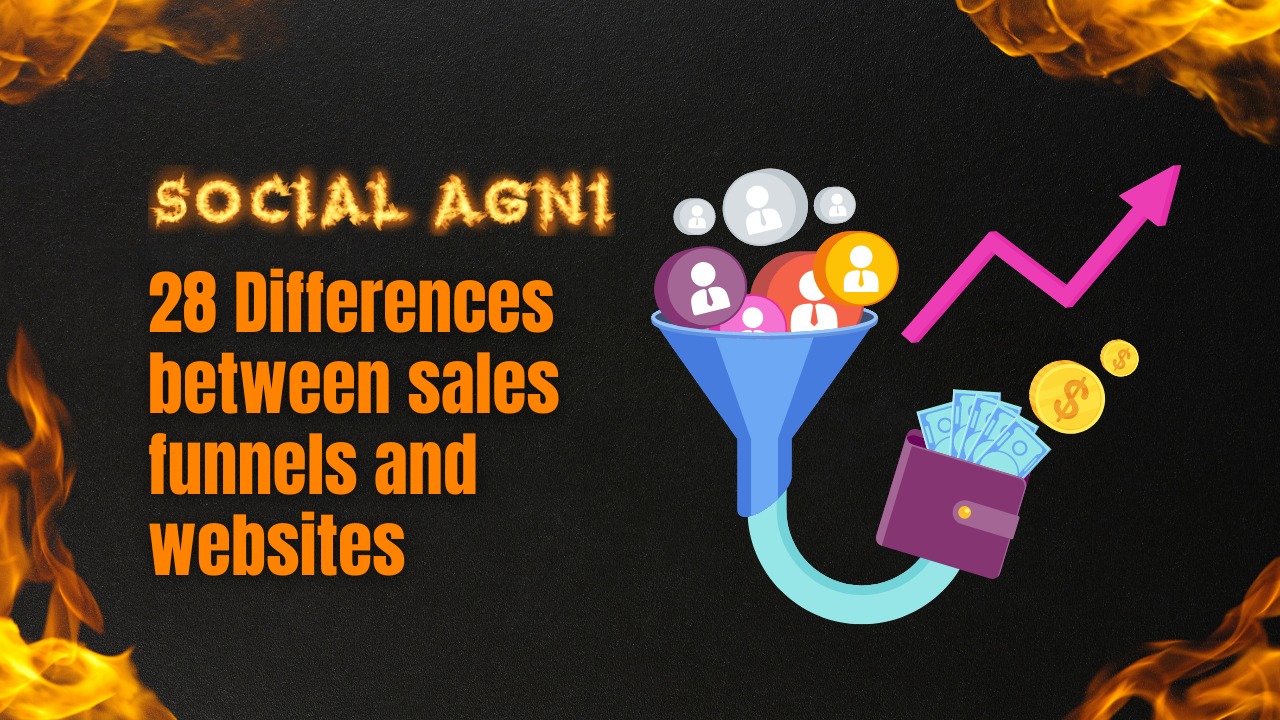Businesses are always looking for strategies to attract and convert clients online in today’s fast-paced digital world. Sales funnels and websites help with this. Both engage potential consumers, but their design, functionality, and strategy differ. In this post, we’ll compare sales funnels and websites and discuss how they may help a business’s marketing and sales. Sales funnels steer potential clients through a sequence of steps to a desired action, such as buying or providing contact information. Sales funnels are designed to increase conversions and income, unlike typical websites. Using effective copywriting, tailored offers, and personalized communication, they grab leads, nurture prospects, and generate sales. However, websites act as virtual marketplaces and provide information about items, services, and brand identification. Websites showcase a company’s products, introduce the brand, share useful information, and engage visitors. They let consumers navigate between websites and discover the business. User experience and interaction distinguish sales funnels from websites. Sales funnels eliminate distractions and direct potential consumers to a specified activity. Websites allow visitors to browse areas at their own leisure. They prioritize user involvement with a variety of material, interactive components, and chances to explore the company’s services. Websites provide information and brand recognition, whereas sales funnels focus on conversions and sales. Sales funnels use persuasion and focused messaging to convert leads into customers. Websites value education, credibility, and trust. They offer thorough product/service descriptions, FAQs, client testimonials, and other materials to help potential buyers decide. In conclusion, websites and sales funnels serve diverse objectives in the internet business environment. Sales funnels simplify the user experience to increase conversions and revenue. Websites offer more information, brand identification, and content interaction. Businesses must understand the distinctions between these two tools to choose which method best meets their marketing and sales goals to reach and convert their target audience. S.no. Aspect Sales Funnel Website 1 Purpose Designed for guiding Multi-purpose 2 Structure Linear structure Flexible structure 3 Goal Conversion-focused Information and engagement 4 Lead Conversion Lead to customer conversion Online presence 5 Stages Specific stages Multiple pages and sections 6 Buyer Journey Emphasizes buyer journey Showcasing products/services 7 Call-to-Actions Clear call-to-actions Varied user interactions 8 Target Audience Lead generation focus Broader target audience 9 Optimization Focus Optimize for conversions Optimize for user experience 10 Content Type Narrow and focused content Diverse content types 11 Lead Nurturing Lead nurturing mechanisms Content marketing strategies 12 Testing and Optimization A/B testing of elements SEO optimization 13 Automation Automates follow-up actions Interactive features 14 Distractions Limited distractions More information and options 15 Analytics and Tracking Sales-driven metrics Website analytics 16 Funnel Analytics Funnel analytics and tracking User behavior tracking 17 Marketing Integration Email marketing integration Blogging and social sharing 18 Landing Pages Landing pages for conversions Product/service catalog 19 Upselling and Cross-selling Upselling and cross-selling Customer reviews and feedback 20 Sales Team Involvement Sales team involvement Customer support functionality 21 Lead Scoring and Qualification Lead scoring and qualification FAQs and knowledge base 22 Follow-up Sequences Follow-up sequences Contact forms and inquiries 23 Optimization Approach Goal-oriented optimization User engagement optimization 24 Marketing Funnel Emphasizes marketing funnel Provides overall web presence 25 Conversion Rate Tracking Focuses on tracking conversion rates Tracks user engagement and behavior 26 Lead Segmentation Segments leads based on funnel stage Can segment users based on preferences, demographics, etc. 27 Sales Team Alignment Aligns sales team with funnel stages Focuses on aligning website content with user needs 28 Revenue Generation Directly focuses on generating revenue Revenue generation may be indirect through lead generation and sales Frequently Asked Questions (FAQs)
